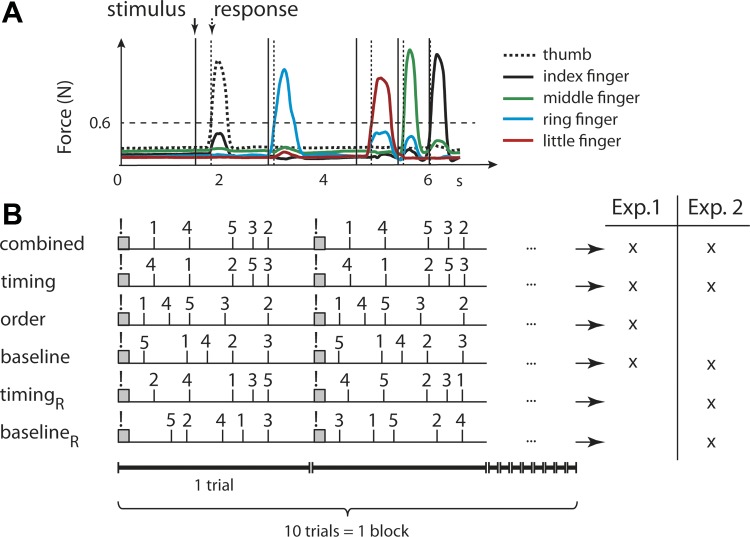Fig. 2.
Task design. A: subjects performed a SRTT by producing a force press with the selected finger of the right hand as fast and accurately as possible after a visual presentation of an imperative stimulus (e.g., “4” ring finger). Cues were separated by a specific sequence of inter-stimulus-intervals. Reaction time was defined as force exceeding 0.6 N both for online feedback and data analysis. B: after training (200 trials) on the combination of a specific sequence of finger presses and temporal intervals, participants were tested on different condition in blocks of 10 trials each. In experiment 1, subjects were tested on the trained sequence (combined), on the trained temporal sequence combined with a new ordinal sequence (timing), on the trained ordinal sequence combined with a new temporal sequence (order), as well as on new ordinal and temporal sequence (baseline). In all these conditions, the sequence stayed the same for a block of 10 trials. In experiment 2 subjects were also tested on the trained temporal sequence combined with a random finger order (timingR) and on a random temporal sequence combined with a random ordinal sequence (baselineR). The order condition was not tested in the latter.

